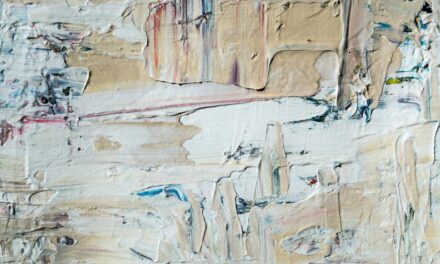Engaging in group art projects offers a multitude of benefits that extend beyond the mere act of creating. One of the most significant advantages is the opportunity for collaboration. When individuals come together to work on a shared artistic endeavour, they bring diverse perspectives and skills to the table.
This collaborative spirit fosters an environment where creativity can flourish, as participants inspire one another and build upon each other’s ideas. The synergy created in such settings often leads to innovative outcomes that might not have been possible in solitary work. Moreover, group art projects serve as a powerful tool for social interaction and community building.
They provide a platform for individuals to connect, communicate, and bond over a shared goal. This is particularly beneficial in educational settings, where students can develop essential social skills such as teamwork, empathy, and conflict resolution. As participants navigate the challenges of working together, they learn to appreciate different viewpoints and cultivate a sense of belonging within the group.
Ultimately, these experiences can lead to lasting friendships and a stronger sense of community.
Summary
- Group art projects encourage collaboration and teamwork, fostering a sense of community and belonging.
- When choosing a project for your group, consider the interests and skill levels of the participants to ensure everyone can contribute and feel included.
- Ensure you have enough materials and supplies for everyone to participate, and consider any special requirements for the chosen project.
- To facilitate a successful group art project, provide clear instructions, encourage communication, and be flexible and supportive of different ideas and approaches.
- Incorporating group art projects into classroom curriculum can enhance learning, creativity, and social skills, and can be tailored to different subjects and learning objectives.
Choosing the Right Project for Your Group
Understanding the Group’s Interests
For instance, if the group consists of individuals who are passionate about environmental issues, a collaborative mural depicting local wildlife or a community garden project could be particularly inspiring. Conversely, if the participants are more inclined towards abstract art, a collective canvas where each person contributes their unique style might be more suitable.
Assessing Resources and Time Constraints
Additionally, it is essential to assess the available resources and time constraints when choosing a project. Some projects may require extensive materials or lengthy time commitments that could deter participation. Opting for simpler projects that can be completed in shorter time frames can help maintain enthusiasm and momentum.
Involving the Group in the Decision-Making Process
It is also beneficial to involve the group in the decision-making process; soliciting their input can lead to greater investment in the project and ensure that everyone feels valued and included.
Materials and Supplies Needed for Group Art Projects
The materials and supplies required for group art projects can vary widely depending on the nature of the project chosen. However, there are some fundamental items that are often essential for any collaborative artistic endeavour. Basic supplies such as paper, paints, brushes, markers, and glue are typically necessary for most projects.
It is advisable to gather a variety of materials to cater to different artistic preferences and techniques, allowing participants to express themselves freely. In addition to traditional art supplies, consider incorporating unconventional materials that can spark creativity and innovation. Items such as recycled materials, fabric scraps, or natural elements like leaves and twigs can add unique textures and dimensions to the artwork.
Furthermore, having ample workspace and tools such as easels or tables will facilitate a comfortable environment for collaboration. Ensuring that all participants have access to the necessary materials will help create an inclusive atmosphere where everyone can contribute meaningfully.
Tips for Facilitating a Successful Group Art Project
Facilitating a successful group art project requires careful planning and consideration of various factors. One key aspect is establishing clear objectives and guidelines from the outset. Communicating the project’s goals helps participants understand their roles and responsibilities within the group.
It is also important to encourage open dialogue throughout the process, allowing individuals to voice their ideas and concerns. This fosters a sense of ownership over the project and promotes a collaborative spirit. Another vital tip is to be flexible and adaptable during the project.
While having a structured plan is beneficial, it is equally important to allow room for spontaneity and creativity. Sometimes, unexpected ideas or changes can lead to remarkable outcomes that enhance the overall project. Additionally, recognising and celebrating individual contributions can boost morale and motivate participants to engage fully in the creative process.
Acknowledging each person’s efforts fosters a positive atmosphere where everyone feels appreciated.
Incorporating Group Art Projects into Classroom Curriculum
Integrating group art projects into classroom curricula can significantly enhance students’ learning experiences. Art serves as a powerful medium for self-expression and can be used to explore various subjects in an engaging manner. For instance, a history lesson could be transformed into a collaborative timeline mural where students illustrate key events or figures from different eras.
This not only reinforces their understanding of historical concepts but also allows them to work together creatively. Furthermore, group art projects can promote interdisciplinary learning by connecting art with other subjects such as science or literature. For example, students could create a visual representation of a scientific concept, such as the water cycle, through a collaborative installation using mixed media.
This approach encourages critical thinking and problem-solving skills while fostering creativity. By incorporating group art projects into the curriculum, educators can create dynamic learning environments that cater to diverse learning styles and encourage collaboration among students.
Group Art Projects for Different Age Groups
Projects for Younger Children
For younger children, simple projects that focus on basic techniques and sensory exploration are ideal. Activities such as finger painting or creating collages from cut-out images allow children to express themselves freely while developing fine motor skills. These projects should emphasise fun and creativity rather than perfection.
Challenging Older Students and Adults
For older students or adults, group art projects can delve into more complex themes and techniques. Collaborative installations or large-scale murals can challenge participants to think critically about their artistic choices while encouraging dialogue about relevant social issues or personal experiences.
Enriching the Experience
Additionally, incorporating elements of art history or contemporary practices can enrich the experience, providing context and inspiration for participants as they work together on their creations.
Ideas for Fun and Engaging Group Art Projects
There is no shortage of imaginative ideas for group art projects that can captivate participants of all ages. One popular option is creating a community mural that reflects local culture or history. This project not only beautifies public spaces but also fosters community pride and involvement.
Participants can brainstorm themes together before sketching out designs that represent their collective vision. Another engaging idea is hosting an art swap event where participants create small pieces of artwork to exchange with one another. This encourages creativity while allowing individuals to appreciate each other’s unique styles and perspectives.
Additionally, themed art challenges—such as creating works based on specific colours or materials—can spark friendly competition while promoting collaboration among participants.
Hosting a Group Art Project Party
Hosting a group art project party can be an exciting way to bring people together for a creative experience. To ensure a successful event, careful planning is essential. Start by selecting a suitable venue that provides ample space for participants to work comfortably without feeling cramped.
Whether it’s at home, in a community centre, or an outdoor space, having enough room will facilitate collaboration. Next, consider providing refreshments to keep energy levels high throughout the event. Simple snacks and drinks can create a relaxed atmosphere where participants feel comfortable sharing ideas and engaging with one another.
Additionally, setting up different stations with various materials allows individuals to explore different techniques while working on their projects simultaneously. By fostering an environment that encourages creativity and connection, hosting a group art project party can become a memorable experience that inspires lasting friendships and artistic growth among participants.
If you are interested in exploring different art techniques for group projects, you may want to consider trying out wire sculpture. This article provides an introduction to the art technique of wire sculpture, offering tips and inspiration for creating unique and intricate pieces. Whether you are planning a classroom art project or a party activity, wire sculpture can be a fun and engaging way to get creative with your group. Additionally, you can also check out this article on brushes and their uses in art, which can help enhance your group art projects even further.
FAQs
What are group art projects?
Group art projects are collaborative art activities that involve multiple participants working together to create a single piece of artwork. These projects can be done in classrooms, at parties, or in other group settings.
What are the benefits of group art projects?
Group art projects can help foster teamwork, communication, and creativity among participants. They also provide an opportunity for individuals to share ideas and work together towards a common goal.
What are some examples of group art projects?
Examples of group art projects include creating a large mural, designing a collaborative collage, or working together to paint a large canvas. Other ideas include creating a group sculpture, making a collaborative quilt, or designing a group installation piece.
How can group art projects be incorporated into classrooms?
Group art projects can be incorporated into classrooms as a way to teach collaboration, creativity, and problem-solving skills. Teachers can assign specific roles to students and provide guidance on how to work together to create a cohesive artwork.
What materials are needed for group art projects?
The materials needed for group art projects will depend on the specific project, but common supplies may include paint, brushes, paper, canvas, glue, scissors, and a variety of other art materials. It’s important to consider the number of participants and the scale of the project when determining the materials needed.
How can group art projects be facilitated at parties or events?
Group art projects can be facilitated at parties or events by providing a designated space with all the necessary art supplies. Participants can be given a theme or prompt to work with, and a facilitator can provide guidance and support as needed. It’s important to create a relaxed and inclusive atmosphere to encourage participation from all attendees.


